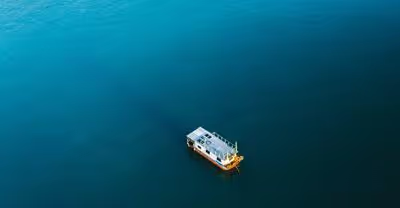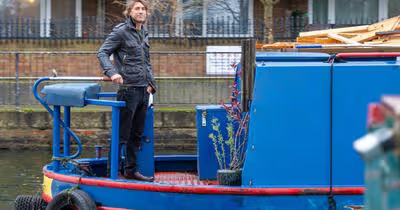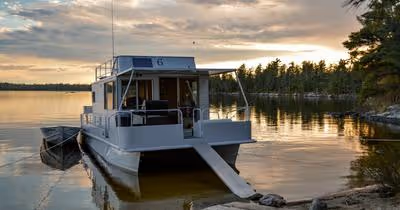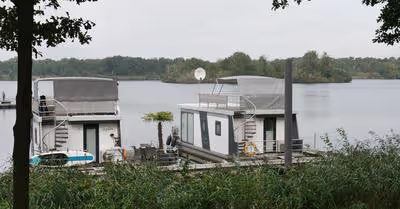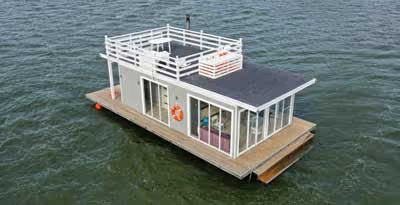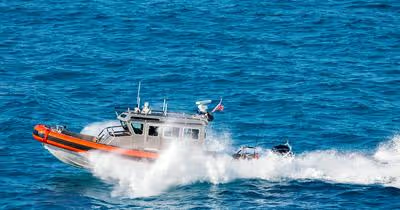
Most people know that the speed of a vehicle is normally measured in miles per hour, but did you know that boats use a completely different unit for speed?
Though mph, or kph for anyone outside the US, is the standard when measuring the speed of cars, trains, and most other vehicles you might think of, boats are the odd one out, measuring speed in a completely different way.
So what unit of speed do boats use? Instead of mph, boats use knots to measure speed. Because travel by boat is so fundamentally different from travel on land, knots are the superior unit when measuring the speed of travel by water.
Though this may be a bit confusing, there are good reasons why boats use knots instead of mph when measuring speed. Travel by sea often entails much longer journeys than by land, where the curvature of the earth needs to be accounted for, so the current location and the distance you’ve traveled are calculated differently than they would be if you were on land. All of this must be accounted for when measuring the speed of a boat on the water.
Though this is all quite different from what most of us are used to on land, there are simple explanations as to why boat speed is measured differently than land speed and by the time you finish reading, you’ll know everything you need to know about the knot.
What Is A Knot And Why Do We Use Them?
A knot is simply equal to one nautical mile per hour or about 1.15 mph, but of course, that brings up a few more questions. What is a nautical mile and why is it different from a mile on land?
Nautical Miles Vs. Land Miles
A nautical mile is just a bit longer than the usual mile on land, equal to about 1.1508 land miles. However, the fact that these two units of measure are so similar in length is a complete coincidence, as the nautical mile was calculated using math, unlike the standard land mile.
You may already know that the standard mile we know today is equal to 5,280 feet. However, this length is completely arbitrary and based on two different units of measure from two different measurement systems, the Roman mile, and the British furlong. As the British began trying to standardize their measurement systems, they realized that they needed to adjust particular units to make them more easily convertible to and from the others.
The furlong, a measurement invented and used by British farmers, measured 660 feet and a Roman mile was equal to 5000 feet. Seeing that a Roman mile was just a tiny bit shorter than 8 furlongs, the British added an additional 280 feet to their mile so that it would be equal to exactly 8 furlongs, making these units of measure much easier to convert back and forth.
The nautical mile, on the other hand, was calculated using math. When traveling by boat across a vast ocean where the curvature of the earth needs to be accounted for, it is much more practical to use longitude and latitude coordinates to measure where you are. But what does this have to do with speed?
To answer this we need to go a little deeper. The earth is split into 180 degrees of latitude, or the lateral lines that you see going horizontally across the earth on a map. Each degree of latitude encompasses one hour, and they can be split down even farther into minutes and seconds.
Nautical miles are informed by these measurements, so one nautical mile is simply one minute of latitude as measured from the Earth’s equator. Because the nautical miles as a unit of measurement is so compatible with the coordinates that sailors use when traveling, the knot has become the standard unit with which we measure the speed of boats.
Where Did The Term “Knot” Come From?
Now that we know what a knot is and why it's used to measure boat speed, where did the term “knot'' come from? Why don’t we simply call it nautical miles per hour or nmph? After all, there is no other word to represent mph.
As many of you know, tying knots is something that has been incredibly important for sailing since the very first sailors set out to sea. Knots were used in all sorts of applications around the ship including the measurement of speed.
Starting at the beginning of the 16th century, sailors began using a device called a chip log to measure the speed of a ship. A fairly simple device, the chip log basically consisted of a flat piece of wood, or log, connected to a rope, or line, wound around a reel. Along the length of the rope the sailors tied knots at consistent intervals so that the distance between each knot was the same along the entire rope.
When the sailors wanted to measure how fast their ship was going, all they had to do was throw the end of the rope tied to the log off the back end of the boat. The log, which was often weighted with lead, would more or less stay in place as the ship moved forward and the knotted rope rolled out behind it. One sailor would count the knots as they rolled out while another would keep track of uniform lengths of time using an hourglass. Using the amount of knots that rolled out during each unit of time allowed them to roughly measure the speed at which their ship was sailing.
This chip log device, and the knots with which it measured speed, would continue to be used to measure speed for hundreds of years until more modern mechanical speed logs became more practical in the 1800s. However, the knots from the chip log were not soon forgotten and continue to live on in the name of the modern unit of measurement, the knot.




